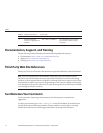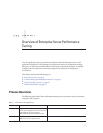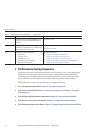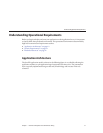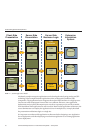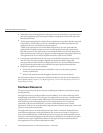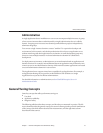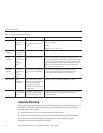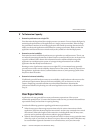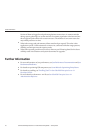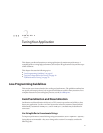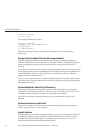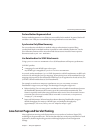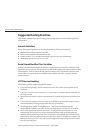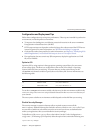
TABLE1–2 FactorsThat AectPerformance
Concept Inpractice Measurement Valuesources
User Load Concurrent
sessions at
peak load
Transactions Per Minute(TPM)
Web InteractionsPer Second
(WIPS)
(Max. numberof concurrent users) * (expected responsetime) /
(time between clicks)
Example:
(100 users*2sec)/10sec=20
Application
Scalability
Transaction
rate measured
on one CPU
TPM or WIPS Measuredfrom workload benchmark. Perform at eachtier.
Vertical
scalability
Increase in
performance
from
additional
CPUs
Percentage gain per additional
CPU
Based on curve ttingfrom benchmark. Performtests while
gradually increasing thenumber of CPUs. Identifythe “knee” of
the curve, whereadditional CPUs are providing uneconomical
gains in performance.Requires tuning as described in thisguide.
Perform at each tierand iterate if necessary. Stophere if this
meets performance requirements.
Horizontal
scalability
Increase in
performance
from
additional
servers
Percentage gain per additional
server process and/orhardware
node.
Use a well-tunedsingle application server instance, as in
previous step. Measure howmuch each additional server
instance and hardwarenode improves performance.
Safety Margins High
availability
requirements
If thesystem must cope with
failures, size thesystem to meet
performance requirements
assuming that oneor more
application server instancesare
non functional
Dierent equations usedif high availability is required.
Excess capacity
for unexpected
peaks
It is desirableto operate a server
at less thanits benchmarked
peak, for somesafety margin
80% system capacityutilization at peak loads may workfor most
installations. Measure your deploymentunder real and
simulated peak loads.
Capacity Planning
The previous discussion guides you towards dening a deployment architecture. However, you
determine the actual size of the deployment by a process called capacity planning. Capacity
planning enables you to predict:
■
The performance capacity of a particular hardware conguration.
■
The hardware resources required to sustain specied application load and performance.
You can estimate these values through careful performance benchmarking, using an
application with realistic data sets and workloads.
GeneralTuningConcepts
SunGlassFishEnterpriseServer2.1PerformanceTuningGuide • January200924



